Who is Markelle Fultz?
Why is the star player of a nine-win, non-NCAA Tournament team being touted as a potential #1 pick in a loaded' draft?
Does he care about winning?
Is he a one?
Is he a two?
Can he play with Isaiah Thomas?
I have to admit, I didn't watch much Washington this year.
These are the often the questions your run of the mill college basketball and NBA fan has about Washington's Markelle Fultz.
Some of them are valid.THE BACKSTORY
Fultz didn't win at Washington. He didn't revive a Huskies program that hadn't been to the NCAA Tournament since 2011, when Isaiah Thomas lifted UW to the big dance with a Pac-12 Tournament Championship buzzer beater against Arizona. The 2016-17 Fultz-led Huskies played with borderline pathetic intensity and defensive fire on a game to game basis. Who would want to watch a lackadaisical Washington team get destroyed by 20-plus points repeatedly?
But how much of the forgettable season at Washington is on Fultz?
In his defense, Fultz was expecting to play with both Dejounte Murray and Marquese Chriss in Seattle, both of whom turned into surprise one-and-dones after strong freshman seasons. His supporting cast was underwhelming, to put it lightly - no T.J. Leaf as his Robin, no Ike Anigbogu protecting the rim and catching lobs, no sharp-shooter like Bryce Alford to whip it ahead to in transition, and no spacing in the half court (the Huskies often played two traditional non-shooting bigs).
It would be easy to put Fultz in the same category as Ben Simmons, who wanted his own show at LSU and didn't play with any fight whatsoever when the going got tough. Often distant from his teammates, Simmons more or less mailed it in mid-season and used his time in Baton Rouge as an NBA pit stop. While it may look similar, or even worse, on the surface, Fultz's situation is different. Why? It starts with his trajectory.
Fultz didn't commit to Washington, a mediocre Pac-12 program at the time, because he wanted to be the headliner, pounding the ball and coasting defensively on his way to the #1 overall pick. He wasn't the top recruit in his class early in his high school career. In fact, as the story goes, Fultz didn't play varsity basketball until his junior season at DeMatha Catholic, a Maryland powerhouse.
Fultz's entire path to relevance screams humility, not entitlement. I first saw him in January of 2015 in Scottsdale, Arizona, really by accident. I wanted to get a look at his teammate, D.J. Harvey, now an incoming freshman at Notre Dame, because he had a lot of hype as a skilled guard with great size. Harvey was just OK against Sierra Canyon, but the consolation prize was #20 in red and blue, standing around 6'2, young in the face with long arms, unique body control, and a loose, creative handle. He wasn't overly productive or really sure what he was doing at the time, but Fultz floated seamlessly with the ball, moving at a different pace than everyone else. Even though Fultz caught my eye, I would have never thought that the smooth, gangly two guard would develop into the potential #1 pick in the 2017 NBA Draft, only two and a half years later.
That type of rapid development doesn't happen by accident, and Fultz didn't commit to Washington as an easy path to the NBA. Former Washington assistant and recruiting guru Raphael Chillious, now at UConn, forged a relationship with Fultz well before his rise to the #4 RSCI player in his class. Fultz stayed loyal to the first major school to show interest in him, and eventually committed to the Huskies in August of 2015. For all the questions about his competitiveness, Fultz is a worker, a self-made player, and a hoops junkie. He keeps a small circle, and is more quiet than boisterous. No family members hyping him to the media, just a simple kid from Upper Marlboro, MD raised by his mother and his supporting cast.
Can he win? Fultz was a huge part of the USA U16 FIBA Americas team that took home gold in the summer of 2016, averaging a ridiculous 13.8 points, 4.0 rebounds and 5.2 assists in only 21.8 minutes. He played a role in blowing out the World Team at the 2016 Nike Hoop Summit, and helped lead Team Wall to a 5-0 record and Adidas Nations Championship in 2015. Some of the questions surrounding Fultz regarding his intensity and winning mentality still certainly have to be answered. He has a relaxed demeanor, and situation or not, had some very forgettable defensive moments in Seattle. He didn't always take over from the jump, and sometimes isn't the first to punch. But Fultz's situation is very different from Ben Simmons', or even Dennis Smith's at N.C. State.
The public perception of Fultz, among some, doesn't quite match up with reality, as it's important to know his starting point, background, and path before dubbing him an eternal stat-stuffer on a losing team'. For the uninformed, the narrative is too easy to fall into - Lonzo Ball, an unselfish, do-it-all winner who took one of the most storied NCAA programs out of the gutter in exciting fashion, versus the talented, yet underwhelming Markelle Fultz, who is another example of the flaws in the one-and-done era.
This situation is certainly not that. Not to take anything away from Lonzo Ball, he's a special talent who makes basketball fun and his teammates better, and may very well end up being the best player to come out of this draft. But the narrative too often surrounding Fultz is far from the truth.
So with all of that in mind, what type of player is Fultz exactly?THE MODERN LEAD GUARD
The NBA has transitioned away from smaller, pass-first floor generals who organize half-court sets and manage the flow of the game. With multiple shooters, ball-handlers, and thinkers ideally on the floor, coaches and scouts covet big guards who can put pressure on the rim in transition, score from all three levels out of pick and roll, and make every ball screen read necessary to ignite a free-flowing, crisp half-court attack predicated on ball movement, player movement and shot-making. In the last two minutes of a tight NBA finals game, who can make something happen in the half court with transition out of the question, defenses tightened, and the floor shrunk late in the clock.
This is where Fultz comes in.
Fultz is a big guard - 6'5, 198 pounds, 6' 10 wingspan - with unique athleticism, impressive body control, long strides, an instinctual and creative handle, pull-up game from three and mid-range, the frame/touch/extension to finish in traffic, and the passing instincts and unselfishness to get others involved consistently.
Simply put, he's as versatile as it gets on the ball, while still being able to have an impact off the ball as he's a capable spot shooter, comfortable attacking off the catch, and can think the game on the move, while having the tools to defend either guard spot.
Although some of his stats could be called empty' given the blowout nature in which they often came, Fultz's productivity at his age can't be understated. Take this stat, for example:
Fultz is the only player in our database (which includes every player drafted since 1984) to have, at age 20 or younger, ever averaged at least 20 points and five assists per game while shooting over 50% from two and 40% from three. He checks a lot of boxes offensively, and although he still has some areas to clean up (defensive intensity, shooting consistency off the catch, and sometimes lackadaisical nature), Fultz has more star potential than any player in this draft. The fact that he was able to score efficiently and post a solid 1.85 assist to turnover ratio with a clogged paint and very little help makes you wonder what he'll able to do with a spread floor and shooting around him.
So Fultz is a modern-day lead guard, but who is he similar to? What are his closest comps both physically and in terms of style, strengths, and weaknesse? We took an in-depth look at how Fultz compares to the following players in terms of physical tools, three-level scoring, and playmaking on the ball: D'Angelo Russell, James Harden, Brandon Roy, and Dwyane Wade.
Due to film limitations - the key is to compare them at the same age - some players are emphasized more than others, and Brandon Roy's film is from his senior season, not his freshman season.PHYSICAL TOOLS
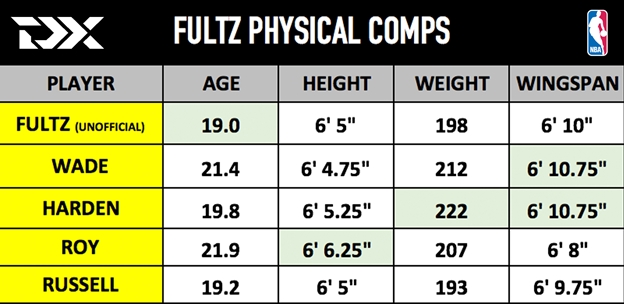
Fultz is no longer the 6'2 gangly guard that he was in 2015, and he compares quite favorably to the guards shown above. In terms of sheer tools, Fultz's closest physical comparison is D'Angelo Russell, but he actually reminds a bit more of Dwyane Wade when you take his athletic profile into account. Similar size, length and frame (at the same age), Fultz isn't quite as quick or explosive (he's more smooth and fluid) as Wade, also known as Flash early in his career, but they have similarly unique body control and side to side agility while on the move. The two guards are also fairly alike in their leaping ability as both, although not dunk-contest style freaks, can get up off of one or two feet in space. Fultz is clearly not the competitor or defender that Wade was, but he does have a comparable ability to slant his lower body to the ground, cut angles and dodge help defenders with relative ease, shifting gears and changing direction along the way.
In terms of the rest of group, Harden is quicker, more powerful (222 pounds), and more forceful in his movements than Fultz at the same age. Russell is far less athletic in a functional sense, and Roy has better size, plays almost exclusively off of two feet, and relies more on height than wiggle, although he does have some lateral agility just to a lesser degree.PRODUCTIVITY

Fultz, Harden, Wade and Russell were all extremely productive freshmen in their own ways - Fultz a versatile three-level scorer and facilitator, Harden a powerful slasher who could shoot off the catch or dribble and playmake, Wade a quick and aggressive driver and mid-range killer who took a sizeable 17.4 two-pointers per 40 minutes, and Russell, a smooth-shot maker and flashy passer who played at his own pace. Roy played only 13 games as a freshman due to injury and took four years to develop into the #6 overall pick in 2006.
Unlike Fultz, however, all of the aforementioned guards played fairly competitive games, which has to be taken into account to some degree. Harden's Sun Devils missed the NCAA Tournament, but went 21-13 on the year. Roy's Huskies lost in overtime of the Sweet 16 to UConn. Russell's Buckeyes made it to the third round of the NCAA Tournament, before falling to Arizona. Wade's Golden Eagles finished 26-7, and although they lost in the first round of the NCAA Tournament, the Chicago guard followed up his redshirt freshman season with a remarkable Final Four run as a redshirt sophomore.
So while Fultz's individual stats certainly stand out and Washington's nine-win dud of a season can't rest entirely on his shoulders, his productivity in comparison to the other guards has to be taken with somewhat of a grain of salt. THREE-LEVEL SCORERS - FIRST LEVEL - THREE BALL
Looking around the NBA, almost all elite offensive players are three-level scorers, with that first level (3-point shooting) reigning king. You certainly have your DeMar Derozans of the world, but the majority of top scoring guards in the NBA are deadly from three - Harden, Stephen Curry, Kyrie Irving, Damian Lillard, to name a few. Of the 1,321 half-court shots Harden took this past regular season, half (655) of them came from three. Of Curry's 1,133 regular season half court attempts, more than half (605) were hoisted beyond the arc.
So how does Fultz fit into the deep-ball-heavy NBA and how does he compare to the aforementioned guards as a three-point shooter at the same age?

Outside of the smooth, sharp-shooting Russell, Fultz is the most advanced off the dribble three-point shooter of the group. While he has a tendency to shoot on the way down somewhat, and his 64.5% free throw percentage is somewhat alarming, he's a tough shot maker all the way out to three and can get to his pull-up three ball with exaggerated hang dribbles, sweeping crossovers, and step backs going left. His herky-jerky style of play makes him a nightmare cover, and he can hop or 1-2 into threes comfortably out of ball screens as well. In only 25 games, Fultz knocked down an impressive 59-of-140 off the dribble jumpers overall during his lone season at Washington.
Russell shot a much easier ball as a freshman and relied more on deception than elevation and wiggle, but he's likely Fultz's closest comparison as a pull up three-point shooter. Russell's 7.8 three-point attempts per 40 minutes at a 41.1% clip make him one of the better shooting guards at that age we've seen in some time, yet it hasn't quite translated all that well to the NBA just yet (under 36% from three through two seasons).
Although he developed into a very solid elevation-based shooter, Roy was a non-threat as a freshman (10% 3P%), Wade was somewhat capable but very selective (2.2 attempts per 40) and much better in mid-range spots, and Harden had a very compact stroke and played off of hang dribbles like Fultz, but wasn't quite as prolific in terms of attempts. Harden shot a cleaner ball than Fultz, but he attempted only 53 pull up jumpers as a freshman (0.74 PPP) to Fultz's 140.
Fultz still has some strides to make as a spot-up shooter, as his release is a bit slow, evident by the fact that 81.7% of his catch and shoot jumpers were of the guarded' variety. In terms of the speed of his release and his setup, he compares somewhat similarly to Harden off the catch. Russell is by far the best spot shooter of the group - 1.182 PPP when guarded' - sporting an ultra-quick, simple set shot that he doesn't need to dip to get rhythm.
Overall, Fultz is an advanced, yet streaky, shot-maker from three, who has more unique ways to create space and get to his pull up in his arsenal than most of these guards at the same stage.SECOND LEVEL - MIDDLE GAME
As much as the NBA is becoming a threes and dunks' league, every great scorer is still a major threat in mid-range spots. Kobe Bryant, DeMar Derozan, Wade, and Chris Paul, made a living off of the middle game, and Fultz, while a threat from three as well, has the ingredients to own the mid-range pull up as well, thanks to his shifty nature, shot-creation skills and ability to make off balance, contested jumpers at a fairly high rate. He does have a tendency to live off tough jumpers a bit too often, but the fact that he can get to his jumper at will inside the arc against most ones or twos is extremely valuable.
Whether by way of hang dribbles, step backs, or bounce outs via pick and roll (30.4% of his offense), Fultz knocked down 40-of-95 inside the arc jumpers, almost identical to Russell's 42-for-96 clip (although Fultz played ten fewer games). Russell shoots a set shot off the bounce, relying on his choppy handle, footwork, and stomp step backs to keep defenders leaning while bringing the ball up quickly when the defender is least expecting it. He was always great at putting his defender in jail' in pick and roll situations by keeping him on his back, making the big defender play him before firing from 17 feet, somethin Fultz is still developing.

While similar in accuracy and volume, Fultz's mid-range game more closely resembles Wade's as he's more reliant on getting into the body of his defender, and rising up over the top. Fultz isn't quite as quick with his footwork or as crafty as Wade, who loved shot fakes, going glass, and post turnarounds, but his separation and elevation-based pull up game most closely resembles Wade, arguably one of the best mid-range shooters of all time.
There are some elements of Fultz's pull up game that are very unique to him. He regularly employs a live dribble, mid-pivot right handed spin move that almost always catches defenders off guard. A lot like a 2017 version of DeRozan, he also uses half spins and stomp pivot dribbles to create space.
Like Fultz, Roy also thrived as a rise and fire style mid-range shooter who could use hesitations and crossovers to get to his pull ups and loved to operate on the block versus smaller guards. Not quite as advanced with step-backs, and more reliant on short runners than deep pull ups, Roy certainly had some similarities with Fultz in terms of his middle game. As for Harden, he could keep defenders on his back and rise up off of sharp 1-2s, but he took just 30 inside the arc jumpers, knocking down only 10. All in all, Wade had likely the most advanced, deadly mid-range game of them all, but Fultz isn't all that far behind.THIRD LEVEL - SLASHING
There are quite a few guards in the NBA who can stretch it to three and/or get to contested mid-range pull ups, but struggle putting pressure on the rim in the half court. Take the 2017 Draft crop for example. Guys like Malik Monk and Luke Kennard can fill it up from the perimeter in a variety of ways, but can they get into the teeth of the defense in the half court versus NBA length and athleticism? Although he's missing the mid-range element, you could pose the same question about Lonzo Ball. Russell's lack of elite athleticism putting pressure on the rim has handicapped him at times at the NBA level.
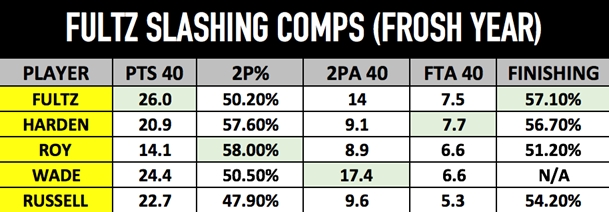
This is what makes Fultz so special - not only can he get to his jumper off the bounce from three or mid-range, he's also a rangy driver who can play at different speeds, get to the front of the rim in one dribble in space, and finish with contact or over length. Fultz isn't as quick as Wade or Harden, but he's smooth with a herky-jerky style of play, shifting gears with relative force and striding his way to the rim, before using his long arms, big hands and strong frame at the rim.
Fultz has had his issues getting all the way to the rim out of isolation situations on a space-depleted Washington team, but with the threat of his pull-up, along with NBA spacing, he should have very little problem getting into the teeth of the defense at the next level. His hang dribble game makes him a tough cover for any guard, and he splits ball screens either with quick crosses or behind the back wrap dribbles. Fultz is also really comfortable attacking on the catch, often changing direction immediately with cross steps or spin moves, and eventually dodging help defenders with impressive body control. Like Russell, Harden and Roy, Fultz has soft touch on floaters as well.
Wade was likely the most dynamic slasher of the bunch, while Harden was both powerful, quick and creative, using sharp crossovers and aggressive jab steps to drop his man. His tremendous free throw rate and 57.6 two-point percentage are both indicative of the type of barrel-chested slasher and finisher he was. Russell had to play almost exclusively off of his jumper, using the pull up threat to suck defenders in, before scurrying to the paint for floaters. There are some similarities between Roy and Fultz as slashers, although Fultz has a bit more creativity in his game at the same stage.
Fultz is also quite dynamic in transition, shifting gears, playing slow to fast, getting to the front of the rim, and exploding with momentum behind him. Although not as fast and aggressive, his transition game resembled some Wade and some Harden in terms of agility and change of speeds. As long as Fultz is shooting the ball at a solid level in the half court, he'll be able to live in the paint much more than he did at Washington, with a spread floor and shooters around him.PLAYMAKING
While the emphasis of this piece is more on Fultz's three-level scoring, and how it compares to other lead guards with similar tools, his vision and unselfishness can't go undiscussed, as he's far more than just a scorer and further along as a playmaker than all these lead guards at the same age, save Russell.
Although he wasn't always able to show it with the starting five the Huskies trotted out, Fultz has excellent vision and instincts, uses his size well out of pick and roll, can thread the needle in transition or the half court, and more often than not tries to play the right way. He can really score, but is unselfish in nature, which may have even cost the Huskies a game or two this past season.

Russell was a flashier passer at the same age, throwing no-look darts and skimming cross court spin passes through traffic right to his teammates. Fultz doesn't quite have that in his game at this stage, but he does have an advantage in that he's able to get into the teeth of the defense much easier than Russell, a below average NBA athlete. Fultz's three-level scoring, positional size, pick and roll play, and passing instincts/creativity give him a lot of potential as a half court distributor, in addition to his dynamic transition play.DEFENSIVE ELEMENT
We didn't dive too deep into the defensive side of the ball when comparing these prospects, but this is certainly an area where Fultz is behind. On one hand, he has the tools to be a multi-positional defender and the agility to make plays off the ball as well - 1.8 steals and 1.3 blocks per 40 minutes - but the defensive intensity and edge was often lacking at UW, both areas where Harden and Russell have struggled as well. Fultz may never be the defensive stalwart or elite rebounder of a Dwyane Wade, but if he does indeed land in a winning environment like Boston, and starts weeding out some of the bad habits he's acquired, he has the physical ability to be more than an adequate NBA defender.OVERALL ANALYSIS
Fultz didn't win, defend or compete like Dwyane Wade at the college level. He didn't knife through defenses quite as aggressively as Harden. His shooting stroke isn't quite as pure as Russell's. But his overall production, physical profile, unique athleticism, polished skill package and shot creation as a modern NBA lead guard is elite relative to the rest of his draft class. He's a three-level scorer, an unselfish facilitator, and at least has the tools to be a plus defender.
While he's not exactly Wade, Harden, Roy, or Russell, he's also not lacking the winning mentality' that his record at Washington would suggest. Fultz's ascension has been remarkable over the last few years. He's a special talent in an advantageous position - likely landing in either Boston or LA, two of the NBA's most storied franchises. Lonzo Ball is as unique of a prospect as we've seen in some time, but Fultz is a star in his own right, and is exactly what NBA franchises are looking for in a lead guard.
Why is the star player of a nine-win, non-NCAA Tournament team being touted as a potential #1 pick in a loaded' draft?
Does he care about winning?
Is he a one?
Is he a two?
Can he play with Isaiah Thomas?
I have to admit, I didn't watch much Washington this year.
These are the often the questions your run of the mill college basketball and NBA fan has about Washington's Markelle Fultz.
Some of them are valid.THE BACKSTORY
Fultz didn't win at Washington. He didn't revive a Huskies program that hadn't been to the NCAA Tournament since 2011, when Isaiah Thomas lifted UW to the big dance with a Pac-12 Tournament Championship buzzer beater against Arizona. The 2016-17 Fultz-led Huskies played with borderline pathetic intensity and defensive fire on a game to game basis. Who would want to watch a lackadaisical Washington team get destroyed by 20-plus points repeatedly?
But how much of the forgettable season at Washington is on Fultz?
In his defense, Fultz was expecting to play with both Dejounte Murray and Marquese Chriss in Seattle, both of whom turned into surprise one-and-dones after strong freshman seasons. His supporting cast was underwhelming, to put it lightly - no T.J. Leaf as his Robin, no Ike Anigbogu protecting the rim and catching lobs, no sharp-shooter like Bryce Alford to whip it ahead to in transition, and no spacing in the half court (the Huskies often played two traditional non-shooting bigs).
It would be easy to put Fultz in the same category as Ben Simmons, who wanted his own show at LSU and didn't play with any fight whatsoever when the going got tough. Often distant from his teammates, Simmons more or less mailed it in mid-season and used his time in Baton Rouge as an NBA pit stop. While it may look similar, or even worse, on the surface, Fultz's situation is different. Why? It starts with his trajectory.
Fultz didn't commit to Washington, a mediocre Pac-12 program at the time, because he wanted to be the headliner, pounding the ball and coasting defensively on his way to the #1 overall pick. He wasn't the top recruit in his class early in his high school career. In fact, as the story goes, Fultz didn't play varsity basketball until his junior season at DeMatha Catholic, a Maryland powerhouse.
Fultz's entire path to relevance screams humility, not entitlement. I first saw him in January of 2015 in Scottsdale, Arizona, really by accident. I wanted to get a look at his teammate, D.J. Harvey, now an incoming freshman at Notre Dame, because he had a lot of hype as a skilled guard with great size. Harvey was just OK against Sierra Canyon, but the consolation prize was #20 in red and blue, standing around 6'2, young in the face with long arms, unique body control, and a loose, creative handle. He wasn't overly productive or really sure what he was doing at the time, but Fultz floated seamlessly with the ball, moving at a different pace than everyone else. Even though Fultz caught my eye, I would have never thought that the smooth, gangly two guard would develop into the potential #1 pick in the 2017 NBA Draft, only two and a half years later.
That type of rapid development doesn't happen by accident, and Fultz didn't commit to Washington as an easy path to the NBA. Former Washington assistant and recruiting guru Raphael Chillious, now at UConn, forged a relationship with Fultz well before his rise to the #4 RSCI player in his class. Fultz stayed loyal to the first major school to show interest in him, and eventually committed to the Huskies in August of 2015. For all the questions about his competitiveness, Fultz is a worker, a self-made player, and a hoops junkie. He keeps a small circle, and is more quiet than boisterous. No family members hyping him to the media, just a simple kid from Upper Marlboro, MD raised by his mother and his supporting cast.
Can he win? Fultz was a huge part of the USA U16 FIBA Americas team that took home gold in the summer of 2016, averaging a ridiculous 13.8 points, 4.0 rebounds and 5.2 assists in only 21.8 minutes. He played a role in blowing out the World Team at the 2016 Nike Hoop Summit, and helped lead Team Wall to a 5-0 record and Adidas Nations Championship in 2015. Some of the questions surrounding Fultz regarding his intensity and winning mentality still certainly have to be answered. He has a relaxed demeanor, and situation or not, had some very forgettable defensive moments in Seattle. He didn't always take over from the jump, and sometimes isn't the first to punch. But Fultz's situation is very different from Ben Simmons', or even Dennis Smith's at N.C. State.
The public perception of Fultz, among some, doesn't quite match up with reality, as it's important to know his starting point, background, and path before dubbing him an eternal stat-stuffer on a losing team'. For the uninformed, the narrative is too easy to fall into - Lonzo Ball, an unselfish, do-it-all winner who took one of the most storied NCAA programs out of the gutter in exciting fashion, versus the talented, yet underwhelming Markelle Fultz, who is another example of the flaws in the one-and-done era.
This situation is certainly not that. Not to take anything away from Lonzo Ball, he's a special talent who makes basketball fun and his teammates better, and may very well end up being the best player to come out of this draft. But the narrative too often surrounding Fultz is far from the truth.
So with all of that in mind, what type of player is Fultz exactly?THE MODERN LEAD GUARD
The NBA has transitioned away from smaller, pass-first floor generals who organize half-court sets and manage the flow of the game. With multiple shooters, ball-handlers, and thinkers ideally on the floor, coaches and scouts covet big guards who can put pressure on the rim in transition, score from all three levels out of pick and roll, and make every ball screen read necessary to ignite a free-flowing, crisp half-court attack predicated on ball movement, player movement and shot-making. In the last two minutes of a tight NBA finals game, who can make something happen in the half court with transition out of the question, defenses tightened, and the floor shrunk late in the clock.
This is where Fultz comes in.
Fultz is a big guard - 6'5, 198 pounds, 6' 10 wingspan - with unique athleticism, impressive body control, long strides, an instinctual and creative handle, pull-up game from three and mid-range, the frame/touch/extension to finish in traffic, and the passing instincts and unselfishness to get others involved consistently.
Simply put, he's as versatile as it gets on the ball, while still being able to have an impact off the ball as he's a capable spot shooter, comfortable attacking off the catch, and can think the game on the move, while having the tools to defend either guard spot.
Although some of his stats could be called empty' given the blowout nature in which they often came, Fultz's productivity at his age can't be understated. Take this stat, for example:
Fultz is the only player in our database (which includes every player drafted since 1984) to have, at age 20 or younger, ever averaged at least 20 points and five assists per game while shooting over 50% from two and 40% from three. He checks a lot of boxes offensively, and although he still has some areas to clean up (defensive intensity, shooting consistency off the catch, and sometimes lackadaisical nature), Fultz has more star potential than any player in this draft. The fact that he was able to score efficiently and post a solid 1.85 assist to turnover ratio with a clogged paint and very little help makes you wonder what he'll able to do with a spread floor and shooting around him.
So Fultz is a modern-day lead guard, but who is he similar to? What are his closest comps both physically and in terms of style, strengths, and weaknesse? We took an in-depth look at how Fultz compares to the following players in terms of physical tools, three-level scoring, and playmaking on the ball: D'Angelo Russell, James Harden, Brandon Roy, and Dwyane Wade.
Due to film limitations - the key is to compare them at the same age - some players are emphasized more than others, and Brandon Roy's film is from his senior season, not his freshman season.PHYSICAL TOOLS

Fultz is no longer the 6'2 gangly guard that he was in 2015, and he compares quite favorably to the guards shown above. In terms of sheer tools, Fultz's closest physical comparison is D'Angelo Russell, but he actually reminds a bit more of Dwyane Wade when you take his athletic profile into account. Similar size, length and frame (at the same age), Fultz isn't quite as quick or explosive (he's more smooth and fluid) as Wade, also known as Flash early in his career, but they have similarly unique body control and side to side agility while on the move. The two guards are also fairly alike in their leaping ability as both, although not dunk-contest style freaks, can get up off of one or two feet in space. Fultz is clearly not the competitor or defender that Wade was, but he does have a comparable ability to slant his lower body to the ground, cut angles and dodge help defenders with relative ease, shifting gears and changing direction along the way.
In terms of the rest of group, Harden is quicker, more powerful (222 pounds), and more forceful in his movements than Fultz at the same age. Russell is far less athletic in a functional sense, and Roy has better size, plays almost exclusively off of two feet, and relies more on height than wiggle, although he does have some lateral agility just to a lesser degree.PRODUCTIVITY

Fultz, Harden, Wade and Russell were all extremely productive freshmen in their own ways - Fultz a versatile three-level scorer and facilitator, Harden a powerful slasher who could shoot off the catch or dribble and playmake, Wade a quick and aggressive driver and mid-range killer who took a sizeable 17.4 two-pointers per 40 minutes, and Russell, a smooth-shot maker and flashy passer who played at his own pace. Roy played only 13 games as a freshman due to injury and took four years to develop into the #6 overall pick in 2006.
Unlike Fultz, however, all of the aforementioned guards played fairly competitive games, which has to be taken into account to some degree. Harden's Sun Devils missed the NCAA Tournament, but went 21-13 on the year. Roy's Huskies lost in overtime of the Sweet 16 to UConn. Russell's Buckeyes made it to the third round of the NCAA Tournament, before falling to Arizona. Wade's Golden Eagles finished 26-7, and although they lost in the first round of the NCAA Tournament, the Chicago guard followed up his redshirt freshman season with a remarkable Final Four run as a redshirt sophomore.
So while Fultz's individual stats certainly stand out and Washington's nine-win dud of a season can't rest entirely on his shoulders, his productivity in comparison to the other guards has to be taken with somewhat of a grain of salt. THREE-LEVEL SCORERS - FIRST LEVEL - THREE BALL
Looking around the NBA, almost all elite offensive players are three-level scorers, with that first level (3-point shooting) reigning king. You certainly have your DeMar Derozans of the world, but the majority of top scoring guards in the NBA are deadly from three - Harden, Stephen Curry, Kyrie Irving, Damian Lillard, to name a few. Of the 1,321 half-court shots Harden took this past regular season, half (655) of them came from three. Of Curry's 1,133 regular season half court attempts, more than half (605) were hoisted beyond the arc.
So how does Fultz fit into the deep-ball-heavy NBA and how does he compare to the aforementioned guards as a three-point shooter at the same age?

Outside of the smooth, sharp-shooting Russell, Fultz is the most advanced off the dribble three-point shooter of the group. While he has a tendency to shoot on the way down somewhat, and his 64.5% free throw percentage is somewhat alarming, he's a tough shot maker all the way out to three and can get to his pull-up three ball with exaggerated hang dribbles, sweeping crossovers, and step backs going left. His herky-jerky style of play makes him a nightmare cover, and he can hop or 1-2 into threes comfortably out of ball screens as well. In only 25 games, Fultz knocked down an impressive 59-of-140 off the dribble jumpers overall during his lone season at Washington.
Russell shot a much easier ball as a freshman and relied more on deception than elevation and wiggle, but he's likely Fultz's closest comparison as a pull up three-point shooter. Russell's 7.8 three-point attempts per 40 minutes at a 41.1% clip make him one of the better shooting guards at that age we've seen in some time, yet it hasn't quite translated all that well to the NBA just yet (under 36% from three through two seasons).
Although he developed into a very solid elevation-based shooter, Roy was a non-threat as a freshman (10% 3P%), Wade was somewhat capable but very selective (2.2 attempts per 40) and much better in mid-range spots, and Harden had a very compact stroke and played off of hang dribbles like Fultz, but wasn't quite as prolific in terms of attempts. Harden shot a cleaner ball than Fultz, but he attempted only 53 pull up jumpers as a freshman (0.74 PPP) to Fultz's 140.
Fultz still has some strides to make as a spot-up shooter, as his release is a bit slow, evident by the fact that 81.7% of his catch and shoot jumpers were of the guarded' variety. In terms of the speed of his release and his setup, he compares somewhat similarly to Harden off the catch. Russell is by far the best spot shooter of the group - 1.182 PPP when guarded' - sporting an ultra-quick, simple set shot that he doesn't need to dip to get rhythm.
Overall, Fultz is an advanced, yet streaky, shot-maker from three, who has more unique ways to create space and get to his pull up in his arsenal than most of these guards at the same stage.SECOND LEVEL - MIDDLE GAME
As much as the NBA is becoming a threes and dunks' league, every great scorer is still a major threat in mid-range spots. Kobe Bryant, DeMar Derozan, Wade, and Chris Paul, made a living off of the middle game, and Fultz, while a threat from three as well, has the ingredients to own the mid-range pull up as well, thanks to his shifty nature, shot-creation skills and ability to make off balance, contested jumpers at a fairly high rate. He does have a tendency to live off tough jumpers a bit too often, but the fact that he can get to his jumper at will inside the arc against most ones or twos is extremely valuable.
Whether by way of hang dribbles, step backs, or bounce outs via pick and roll (30.4% of his offense), Fultz knocked down 40-of-95 inside the arc jumpers, almost identical to Russell's 42-for-96 clip (although Fultz played ten fewer games). Russell shoots a set shot off the bounce, relying on his choppy handle, footwork, and stomp step backs to keep defenders leaning while bringing the ball up quickly when the defender is least expecting it. He was always great at putting his defender in jail' in pick and roll situations by keeping him on his back, making the big defender play him before firing from 17 feet, somethin Fultz is still developing.

While similar in accuracy and volume, Fultz's mid-range game more closely resembles Wade's as he's more reliant on getting into the body of his defender, and rising up over the top. Fultz isn't quite as quick with his footwork or as crafty as Wade, who loved shot fakes, going glass, and post turnarounds, but his separation and elevation-based pull up game most closely resembles Wade, arguably one of the best mid-range shooters of all time.
There are some elements of Fultz's pull up game that are very unique to him. He regularly employs a live dribble, mid-pivot right handed spin move that almost always catches defenders off guard. A lot like a 2017 version of DeRozan, he also uses half spins and stomp pivot dribbles to create space.
Like Fultz, Roy also thrived as a rise and fire style mid-range shooter who could use hesitations and crossovers to get to his pull ups and loved to operate on the block versus smaller guards. Not quite as advanced with step-backs, and more reliant on short runners than deep pull ups, Roy certainly had some similarities with Fultz in terms of his middle game. As for Harden, he could keep defenders on his back and rise up off of sharp 1-2s, but he took just 30 inside the arc jumpers, knocking down only 10. All in all, Wade had likely the most advanced, deadly mid-range game of them all, but Fultz isn't all that far behind.THIRD LEVEL - SLASHING
There are quite a few guards in the NBA who can stretch it to three and/or get to contested mid-range pull ups, but struggle putting pressure on the rim in the half court. Take the 2017 Draft crop for example. Guys like Malik Monk and Luke Kennard can fill it up from the perimeter in a variety of ways, but can they get into the teeth of the defense in the half court versus NBA length and athleticism? Although he's missing the mid-range element, you could pose the same question about Lonzo Ball. Russell's lack of elite athleticism putting pressure on the rim has handicapped him at times at the NBA level.

This is what makes Fultz so special - not only can he get to his jumper off the bounce from three or mid-range, he's also a rangy driver who can play at different speeds, get to the front of the rim in one dribble in space, and finish with contact or over length. Fultz isn't as quick as Wade or Harden, but he's smooth with a herky-jerky style of play, shifting gears with relative force and striding his way to the rim, before using his long arms, big hands and strong frame at the rim.
Fultz has had his issues getting all the way to the rim out of isolation situations on a space-depleted Washington team, but with the threat of his pull-up, along with NBA spacing, he should have very little problem getting into the teeth of the defense at the next level. His hang dribble game makes him a tough cover for any guard, and he splits ball screens either with quick crosses or behind the back wrap dribbles. Fultz is also really comfortable attacking on the catch, often changing direction immediately with cross steps or spin moves, and eventually dodging help defenders with impressive body control. Like Russell, Harden and Roy, Fultz has soft touch on floaters as well.
Wade was likely the most dynamic slasher of the bunch, while Harden was both powerful, quick and creative, using sharp crossovers and aggressive jab steps to drop his man. His tremendous free throw rate and 57.6 two-point percentage are both indicative of the type of barrel-chested slasher and finisher he was. Russell had to play almost exclusively off of his jumper, using the pull up threat to suck defenders in, before scurrying to the paint for floaters. There are some similarities between Roy and Fultz as slashers, although Fultz has a bit more creativity in his game at the same stage.
Fultz is also quite dynamic in transition, shifting gears, playing slow to fast, getting to the front of the rim, and exploding with momentum behind him. Although not as fast and aggressive, his transition game resembled some Wade and some Harden in terms of agility and change of speeds. As long as Fultz is shooting the ball at a solid level in the half court, he'll be able to live in the paint much more than he did at Washington, with a spread floor and shooters around him.PLAYMAKING
While the emphasis of this piece is more on Fultz's three-level scoring, and how it compares to other lead guards with similar tools, his vision and unselfishness can't go undiscussed, as he's far more than just a scorer and further along as a playmaker than all these lead guards at the same age, save Russell.
Although he wasn't always able to show it with the starting five the Huskies trotted out, Fultz has excellent vision and instincts, uses his size well out of pick and roll, can thread the needle in transition or the half court, and more often than not tries to play the right way. He can really score, but is unselfish in nature, which may have even cost the Huskies a game or two this past season.

Russell was a flashier passer at the same age, throwing no-look darts and skimming cross court spin passes through traffic right to his teammates. Fultz doesn't quite have that in his game at this stage, but he does have an advantage in that he's able to get into the teeth of the defense much easier than Russell, a below average NBA athlete. Fultz's three-level scoring, positional size, pick and roll play, and passing instincts/creativity give him a lot of potential as a half court distributor, in addition to his dynamic transition play.DEFENSIVE ELEMENT
We didn't dive too deep into the defensive side of the ball when comparing these prospects, but this is certainly an area where Fultz is behind. On one hand, he has the tools to be a multi-positional defender and the agility to make plays off the ball as well - 1.8 steals and 1.3 blocks per 40 minutes - but the defensive intensity and edge was often lacking at UW, both areas where Harden and Russell have struggled as well. Fultz may never be the defensive stalwart or elite rebounder of a Dwyane Wade, but if he does indeed land in a winning environment like Boston, and starts weeding out some of the bad habits he's acquired, he has the physical ability to be more than an adequate NBA defender.OVERALL ANALYSIS
Fultz didn't win, defend or compete like Dwyane Wade at the college level. He didn't knife through defenses quite as aggressively as Harden. His shooting stroke isn't quite as pure as Russell's. But his overall production, physical profile, unique athleticism, polished skill package and shot creation as a modern NBA lead guard is elite relative to the rest of his draft class. He's a three-level scorer, an unselfish facilitator, and at least has the tools to be a plus defender.
While he's not exactly Wade, Harden, Roy, or Russell, he's also not lacking the winning mentality' that his record at Washington would suggest. Fultz's ascension has been remarkable over the last few years. He's a special talent in an advantageous position - likely landing in either Boston or LA, two of the NBA's most storied franchises. Lonzo Ball is as unique of a prospect as we've seen in some time, but Fultz is a star in his own right, and is exactly what NBA franchises are looking for in a lead guard.













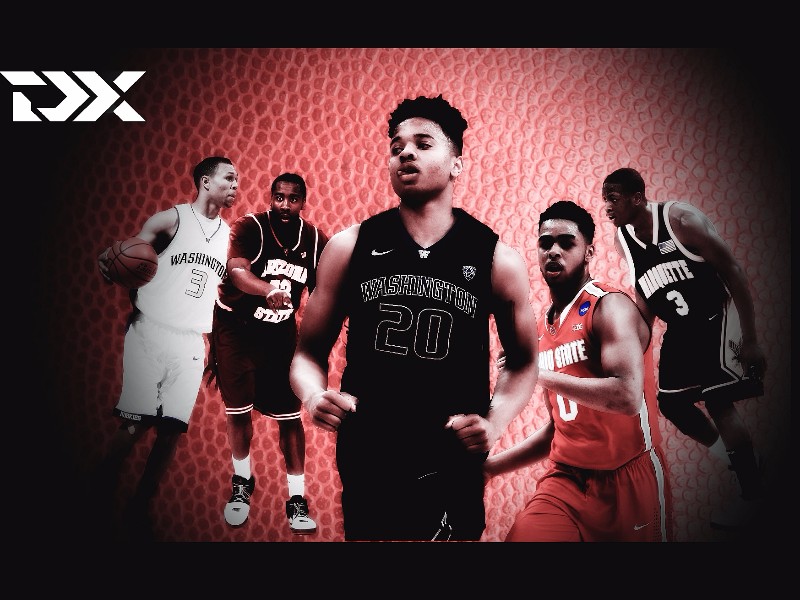















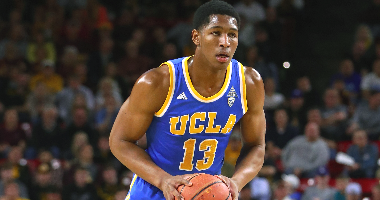

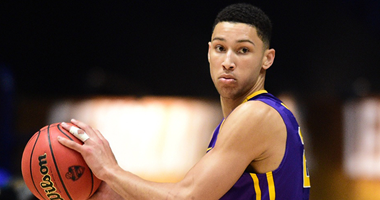

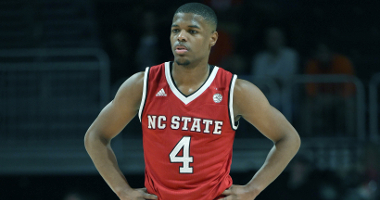

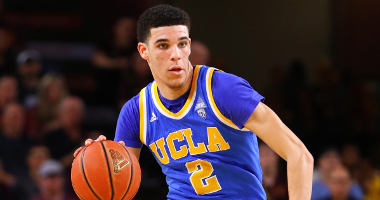








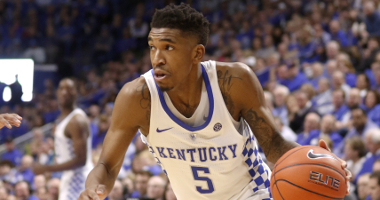







Comments